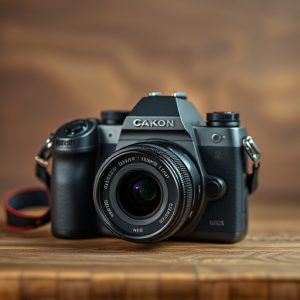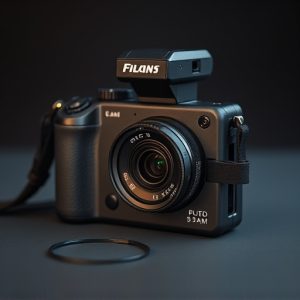Body Camera Market Survey: Sales, Features, Legalities, and Real-World Impact
The market for body cameras has grown significantly, offering law enforcement a range of high-quali…….
The market for body cameras has grown significantly, offering law enforcement a range of high-quality options that excel in video and audio clarity, battery life, storage capacity, and data management. When selecting a body camera for sale, it's crucial to consider resolutions like 1080p for clear incident documentation, as well as additional features such as night vision, weather resistance, and sturdy builds that ensure operational effectiveness across various conditions. Innovative features like integrated GPS and live streaming are increasingly valuable, especially in emergencies. Leading manufacturers like Axon, Panasonic, and Motorola Solutions offer specialized technologies tailored for law enforcement's needs, with the choice of body camera largely depending on an agency's operational requirements, budget, and technology ecosystem compatibility. Body cameras also play a pivotal role in enhancing accountability and transparency within law enforcement by adhering to strict legal frameworks and privacy regulations. They must include advanced features like data encryption, secure storage, and access controls to protect citizens' privacy rights and maintain public trust in law enforcement. The integration of body camera technology is essential for modern policing, emphasizing the importance of compliance with legal standards and upholding the integrity of law enforcement operations. These devices have significantly transformed law enforcement by providing a firsthand view of interactions, contributing to reduced use of force, increased accountability, and improved public safety outcomes. Their effectiveness is demonstrated by case studies from cities like Seattle and Mesa, Arizona, which show that body cameras can lead to more civil interactions and de-escalate situations, making them not just tools for accountability but also for enhancing community relations and ensuring the responsible use of police authority.
bodies are increasingly outfitted with cameras, a pivotal development in modern law enforcement. This article delves into the multifaceted role of these devices, from market assessments of top-tier body camera options to the technical specifications that ensure their efficacy and compliance with privacy standards. We explore the real-world implications of these tools through case studies, shedding light on their impact on police accountability and public safety. Whether you’re a law enforcement professional or part of a policy-making body, understanding the landscape of available body camera for sale products is crucial for informed decision-making in this era of heightened scrutiny and transparency.
Assessing the Market: Body Camera for Sale Options and Features
In recent years, the market for body cameras has expanded significantly, with a plethora of options available for purchase to law enforcement agencies and individual officers. When assessing the best body camera for sale, it’s crucial to consider factors such as video and audio quality, battery life, storage capacity, and data management capabilities. High-definition recording ensures clear documentation of interactions, which is essential for accountability and evidence collection. Many models offer various resolutions, with 1080p being a common standard that balances clarity with file size. Additionally, features like night vision, weatherproofing, and rugged design are important for operational use in diverse environments. Body cameras with built-in GPS and real-time streaming capabilities are also gaining popularity, as they can provide precise location data and allow for immediate video transmission, which can be critical in emergency situations. When shopping for a body camera for sale, it’s advisable to compare these features across different brands such as Axon, Panasonic, or Motorola Solutions, each offering proprietary technologies and services tailored to law enforcement needs. The decision often hinges on the specific operational requirements of the agency, budget considerations, and the potential for integration with other technologies like in-car video systems and real-time evidence management software.
Legal Considerations and Compliance with Privacy Regulations
In recent years, law enforcement agencies have increasingly turned to body cameras as a tool to enhance accountability and transparency within policing. A pivotal aspect of integrating such technology is ensuring that its deployment aligns with legal considerations and complies with privacy regulations. These cameras capture sensitive data and thus require careful management to protect individuals’ privacy rights. Legislation such as the Video Privacy Protection Act and various state laws in the U.S. outline the permissible use and storage of video footage, emphasizing the need for agencies to have robust policies in place. When sourcing body cameras for sale, law enforcement must consider these legal frameworks to ensure compliance. Vendors providing body camera solutions should be well-versed in privacy laws, offering products equipped with features like data encryption, secure storage, and access controls that adhere to the stringent requirements set forth by privacy regulations. Agencies must also establish clear guidelines for when cameras are activated, how footage is stored, who has access to it, and under what circumstances it can be shared or disclosed, thereby safeguarding against potential misuse or unauthorized exposure of private information. This due diligence not only protects the rights of citizens but also maintains the integrity and trust in law enforcement operations.
Technical Specifications and Performance Metrics for Law Enforcement Cameras
Body cameras have become an integral component in modern law enforcement, offering a high-definition perspective on interactions between officers and civilians. When selecting a body camera for sale, it is crucial to consider technical specifications that ensure optimal performance under various conditions. These devices typically feature full HD recording capabilities to capture clear, detailed footage. The resolution can range from 720p to 4K, with higher resolutions providing greater clarity for both live-viewing and post-event analysis. Low-light performance is another critical specification, as officers may encounter environments where lighting conditions are less than ideal. Cameras equipped with night vision or advanced low-light sensors can record usable footage even in near darkness.
In addition to high-quality video capture, the durability and comfort of these cameras are equally important for sustained use in the field. A robust design resistant to dust, water, and shock ensures that the camera remains operational in challenging environments. Battery life is another performance metric that significantly impacts the effectiveness of body cameras; models with longer battery lives and quick-charge capabilities are preferred to minimize downtime. Moreover, real-time data transmission via secure Wi-Fi or cellular connections allows for immediate access to footage, aiding in swift investigations and real-time decision-making. When purchasing a body camera for sale, it is advisable to consider these technical specifications and performance metrics to ensure that the device aligns with the operational needs of law enforcement agencies.
Case Studies: Real-World Impact of Body Cameras on Police Accountability and Public Safety
Body cameras have emerged as a pivotal tool in the modern law enforcement arsenal, offering a transparent lens into police interactions with the public. A case study from Seattle exemplifies this, where the implementation of body cameras led to a significant reduction in the use of force by officers and enhanced accountability. The data from these devices provide objective evidence for both law enforcement and civilian oversight committees to review, which has been instrumental in holding officers responsible for their actions. This transparency not only fosters trust but also serves as a deterrent against misconduct.
Furthermore, the impact of body cameras extends beyond internal departmental use. In fact, they have become a staple in public safety strategies across various jurisdictions. The sale of body camera units has seen a surge, with many agencies investing in these devices to equip their officers. For instance, a study conducted in Mesa, Arizona, demonstrated that the presence of body cameras during traffic stops resulted in more polite and compliant behavior from drivers, which in turn reduced the likelihood of escalated situations. This suggests that body cameras not only serve as accountability mechanisms but also promote de-escalation, contributing to improved public safety outcomes. The availability of body camera for sale has made it easier for departments to procure these devices, ensuring a broader implementation and consistent monitoring of police activities.


